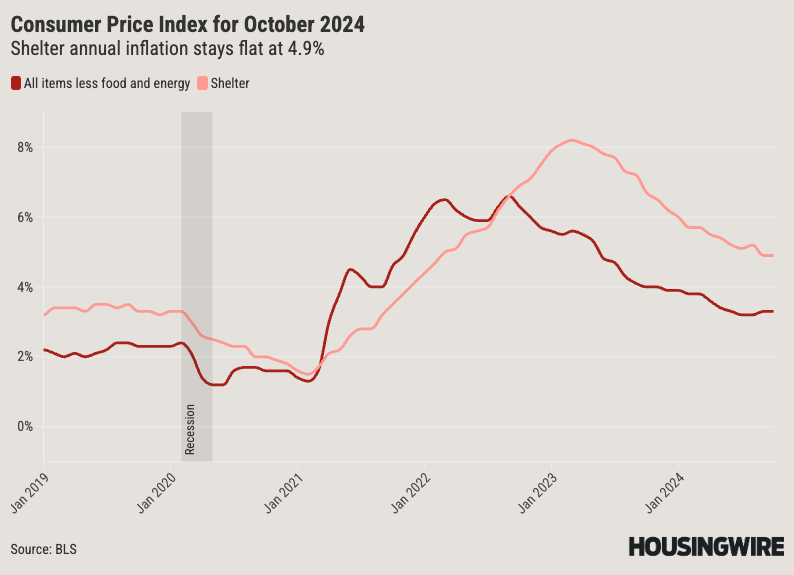The Federal Reserve’s policy of higher interest rates has significantly reduced inflation, but one sector of the economy — shelter costs — continues to drive the Consumer Price Index (CPI) higher.
In October, housing accounted for more than half of the CPI increase compared to September, rising 0.4% on a seasonally adjusted basis. The rise is in line with shelter cost numbers going back to April as the monthly inflation rate since then has ranged from 0.1% to 0.5%.
On an unadjusted basis, shelter costs rose 4.9% year over year. According to Danielle Hale, chief economist at Realtor.com, that is higher than pre-pandemic baselines that averaged 3.3%.
“Although shelter inflation has moderated considerably, an uptick in shelter prices month-to-month is a step in the wrong direction,” Hale said in a statement.
On a year-over-year basis, overall inflation ticked up 2.6% while core inflation — minus food and energy costs — rose 3.3%.
Historically high inflation prompted the Federal Reserve to raise interest rates in 2022, which subsequently pushed mortgage rates into the high-7% range. But moderating inflation allowed for a 50 basis-point (bps) rate cut by the Fed in September and a 25-bps reduction a week ago.
While some economists expect additional interest rate cuts in the short and medium term, Donald Trump’s return to the White House could reduce the likelihood of these cuts. Trump is expected to expand government spending, boost consumption and levy heavy tariffs on foreign goods, which might lead to higher inflation and force the Fed to raise interest rates again.
The good news for consumers is that energy costs fell 4.9% year over year, driven by a 20.8% decline for fuel oil and a 12.2% decline for gasoline. This helped to reduce the impact of rising shelter costs.
But food prices rose 2.6%, something that contributed to a negative perception of the economy and helped propel Trump to his win over Vice President Kamala Harris.
This has put a squeeze on household budgets across the country. Coupled with rising rent and home prices, many prospective homebuyers have had trouble finding affordable housing options.
“Inflation could be the wildcard that drives the 2025 housing market,” Bright MLS chief economist Lisa Sturtevant said in a statement. “Overall home sales in 2024 are likely to be right around what they were in 2023 — a 30-year low in the number of transactions.
“With uncertainties around government spending, taxes, tariffs and immigration policy, inflation could move higher and could stifle the prospects for a housing market rebound.”

